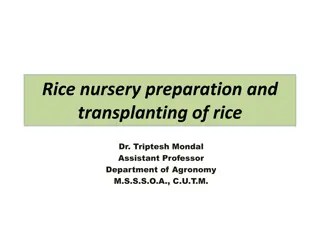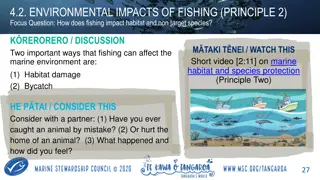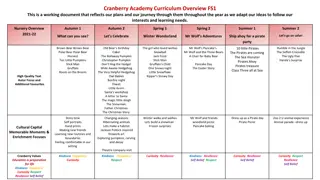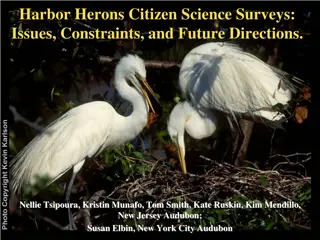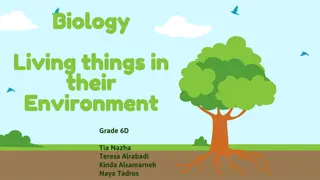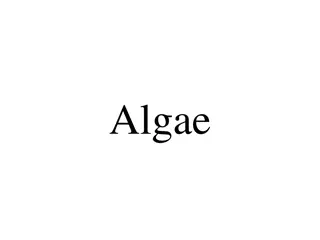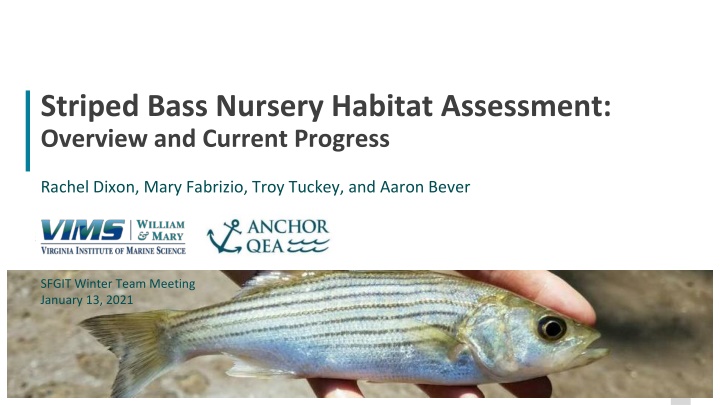
Striped Bass Nursery Habitat Assessment and Research Progress
Explore the ongoing assessment of nursery habitats for juvenile Striped Bass in the Chesapeake Bay, addressing declining population trends and the need for effective management actions. Objectives include understanding habitat conditions, quantifying habitat changes' impact on sustainability, and identifying key environmental factors. Utilizing fishery surveys and environmental variables, the project aims to develop habitat suitability models by Spring 2022.
Download Presentation

Please find below an Image/Link to download the presentation.
The content on the website is provided AS IS for your information and personal use only. It may not be sold, licensed, or shared on other websites without obtaining consent from the author. If you encounter any issues during the download, it is possible that the publisher has removed the file from their server.
You are allowed to download the files provided on this website for personal or commercial use, subject to the condition that they are used lawfully. All files are the property of their respective owners.
The content on the website is provided AS IS for your information and personal use only. It may not be sold, licensed, or shared on other websites without obtaining consent from the author.
E N D
Presentation Transcript
Striped Bass Nursery Habitat Assessment: Overview and Current Progress Rachel Dixon, Mary Fabrizio, Troy Tuckey, and Aaron Bever SFGIT Winter Team Meeting January 13, 2021 1 1
Motivation What nursery conditions support the recruitment of juvenile striped bass in Chesapeake Bay? Has the extent of high-quality habitat changed over time? Rockfish show worrisome trends. The fish were well below sustainable levels in 2019, and there has been below- average spawning activity in the Bay over the past two years, highlighting the need for bold management actions to rebuild the population [that] more effectively limit striped bass mortality and improve striped bass habitat - Chesapeake Bay Foundation 2020 State of the Bay Report 2
Objectives Understand conditions in estuarine habitats used by YOY (age-0) and late juvenile (age 1-4) Striped Bass and quantify how changes in availability and condition of habitats impact the long-term sustainability of the stock. Assess the relationship between spatial extent and persistence of suitable habitats to annual fish abundance. Quantify the persistence of suitable habitat based on thresholds Assess relationship between suitable habitat and fish abundance Identify key environmental conditions Delineate and map habitats that support abundance Develop habitat suitability models Spring 2022 3
Time of capture Annual fishery surveys Current Progress Characterize habitat at the time of capture based on annual surveys 3-D hydro- dynamic model Interpolated dO2 model Identify key environmental conditions for nursery (age-0) and juvenile (age 1-4) habitats Habitat suitability model Collect and organize survey datasets Obtain hydrodynamic model outputs at survey sampling locations at time of catch 4
Data Source: Fishery Surveys ~52,000 individual sampling events between 1996 and 2019* 1. VIMS Juvenile Striped Bass Seine Survey July-September, VA tributaries 2. MD DNR Juvenile Striped Bass Seine Survey June-September, MD tributaries and upper Bay 3. DC DOEE Striped Bass Seine Survey April-November, Potomac and Anacostia rivers 4. VIMS Juvenile Fish Trawl Survey January-December, VA Bay and tributaries 5. MD DNR Small Trawl Survey May-November, MD tributaries and sounds 6. ChesMMAP March-November (2002-2018*), Bay mainstem 7. DC DOEE Standard Electrofishing Survey March-November, Potomac and Anacostia rivers Image source: Anchor QEA hydrodynamic model domain 5
Environmental variables for habitat indices 3D hydrodynamic model output 28 variables Dynamic and static variables Instantaneous and tidal-averaged (preceding time of catch) Salinity, current speed, temperature, water depth, distance to shore, sediment composition (% fine sediment) 6
Ongoing work Among this suite of environmental variables, what are the important factors driving relative abundance within habitats? Age-0 nurseries Age 1-4 juveniles Develop habitat suitability models using key variables identified Establish thresholds that correspond to unsuitable, suitable, and optimal habitat conditions 7
Acknowledgements Funding Steering Committee Chesapeake Bay Trust Mandy Bromilow VIMS Office of Academic Studies Simon Brown David Bruce Survey Support Lisa Havel A.K. Leight VIMS Margaret McGinty Wendy Lowery, Jack Buchanan, Chris Bonzek, Recruitment Surveys & Multispecies Research Groups Olivia Philips MD DNR Jim Uphoff Eric Durell, Chris Walstrum Bruce Vogt DC DOEE Justin Shapiro Daniel Ryan, Luke Lyon, Chris Adriance & survey staff 8 8
Thank you! rldixon@vims.edu 9

